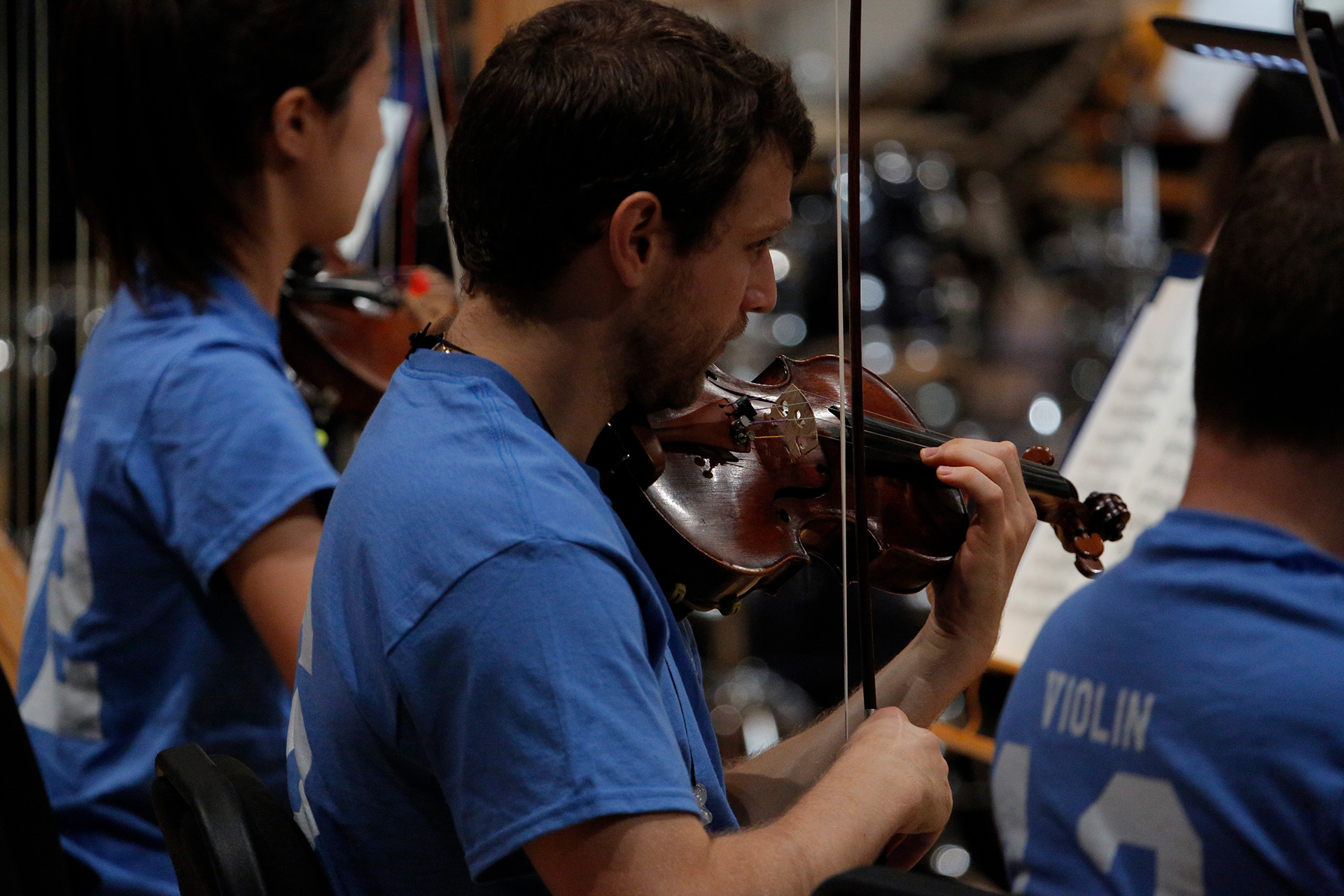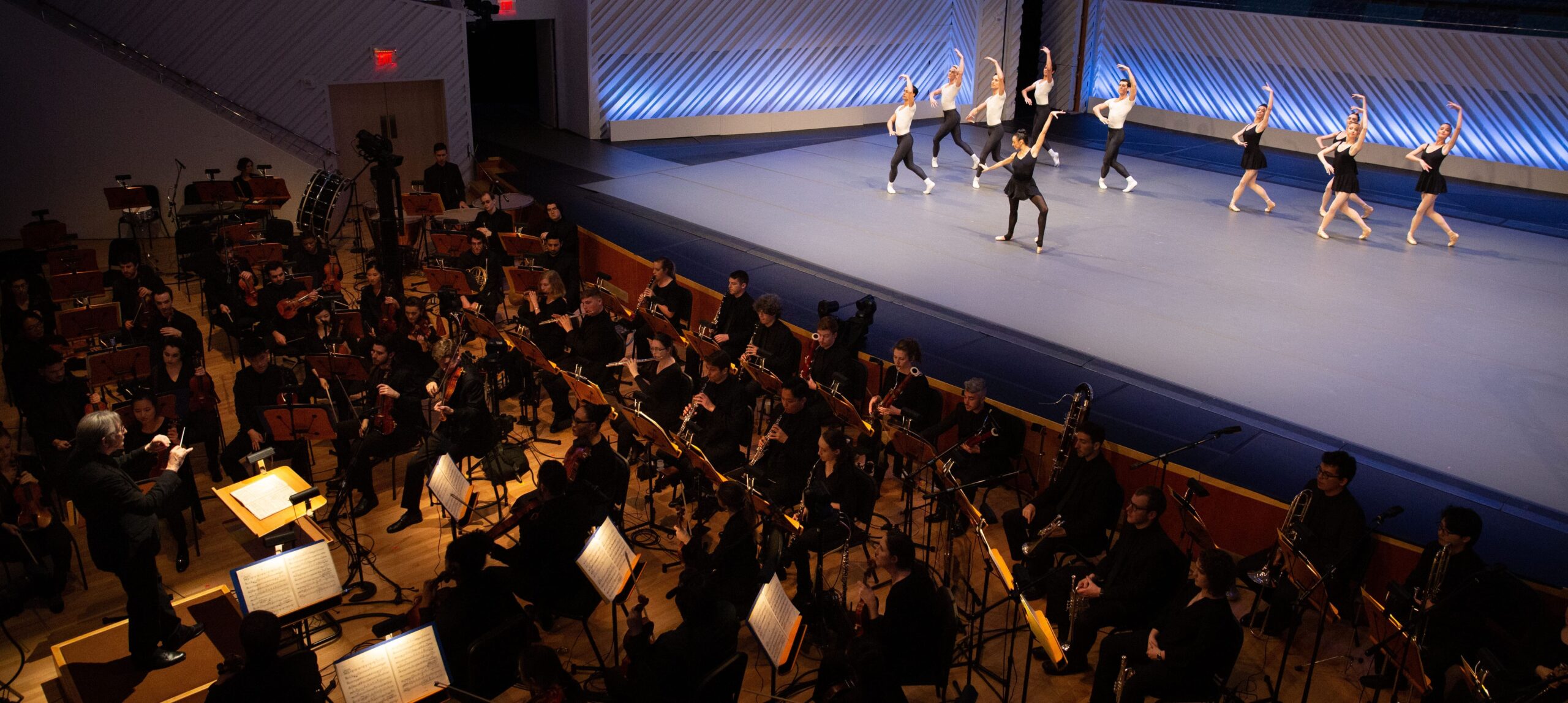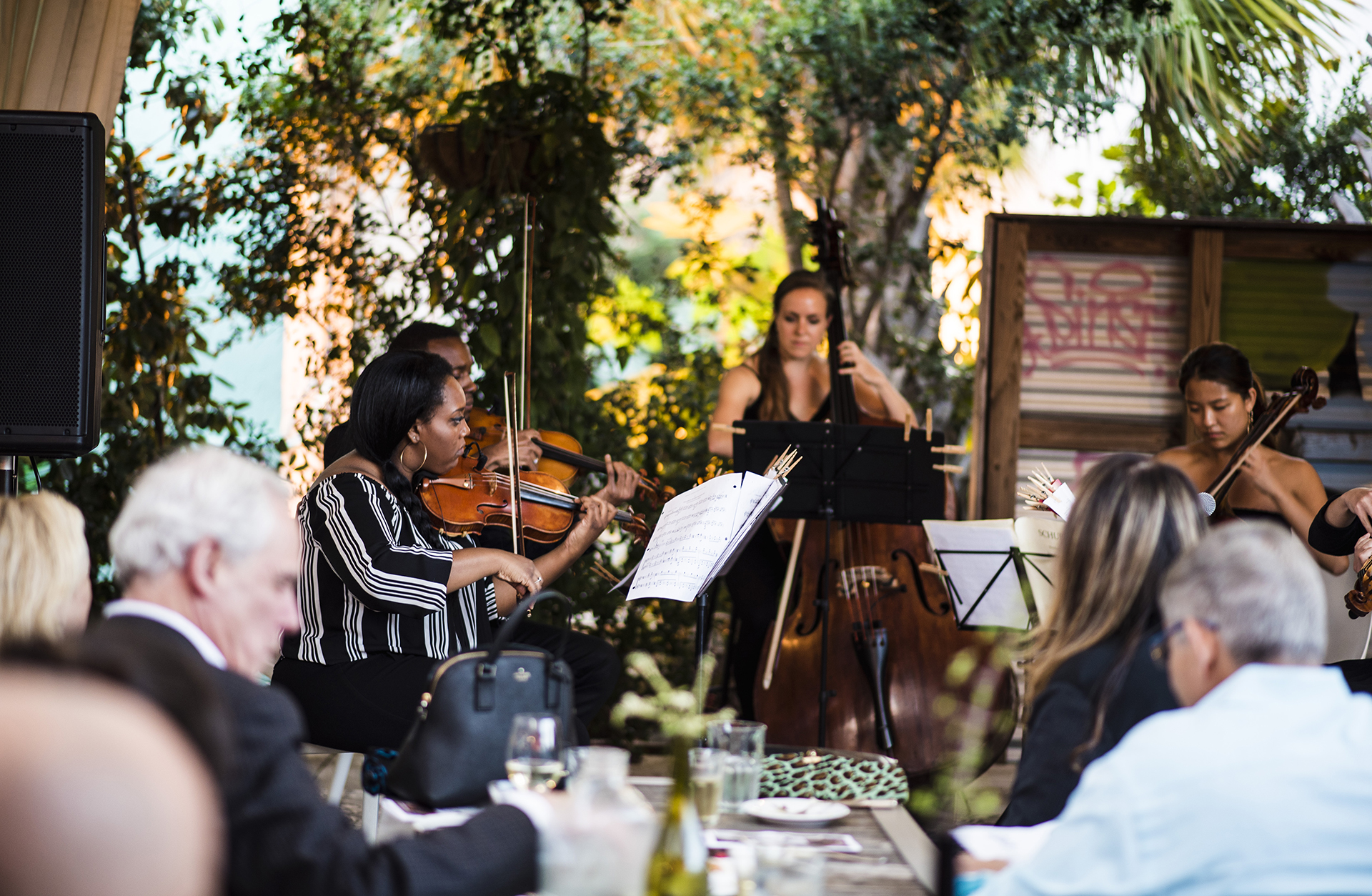Percussion For All

Goals
Audience will get to know the percussion family and experiment with rhythm.
Overview
Find objects in your space you can hit and drum along to the performance.
Process
- Choose a piece with strong rhythmic elements, perhaps with a percussion section feature.
- Virtual concert: Ask the audience to look around them and collect items around their house they can hit, shake, scrape, etc, and something to hit them with. Demo a few of your own collected items, and ask the audience to drum, shake, hit, scrape, and jam along!
- In a concert hall: Ask the audience to try clapping their hands, stomping their feet, tapping their seat, and explore different percussive sounds they can get from within their personal space bubble! Demo a few from the stage, and then give the audience a moment to try it out. Try teaching a few rhythms from the piece in call-and-answer style.
Audience Type

What does this activity look like in action?
Example Script:
Piece: Tania León – A la Par
Performer video: Cuban composer Tania León’s A la Par uses the rhythms and percussion instruments of a fun and exciting Cuban dance called “rumba.” As you’ll see, the composer has the percussionist play on all kinds of different instruments. The cool thing about percussion instruments is that ANYTHING and EVERYTHING can be a percussion instrument! Take a look at what’s around you right now:
-A computer desk or table? [*taps on table surface*] Drum. -A chair with wooden legs? [*appears under a chair and taps on the legs with pens*] Drum. -A glass of water? Hey, that’s not a thing! OH WAIT YES IT IS [*pours out water, taps on it with pen*]. -Bag of chips? Thing of mints? Guess what? Homemade maracas! [*plays them as maracas, then throws them away*] All of these things can be percussion instruments!
Now, it’s your turn to make some music! Use your hands or grab a pencil or two and start to tap on all of these different objects and surfaces! Really have fun with this – after all, “rumba” does also mean “party!” Every surface and every object has its own unique sound, so for the next 15 seconds or so, go exploring and see how many different instruments you can create! Aaaaand GO!
Now that we have our instruments, remember: every object has its own unique sound, so really try to bring out your inner percussion Rockstar while playing along to this performance of Tania Leon’s A La Par!

Modifications
- Hear: This activity can also be used to teach a specific rhythm from the piece you are performing. After asking your audience to try out their percussive sounds (whether at home or in the venue), demonstrate a rhythm and ask for the audience to try it out. You can teach small sections at a time, and build to a longer pattern, if desired.
Notes
- This activity works best in a virtual concert setting for the audience to get the most creative!
Create interactive performances. We have activities to help you connect with your audiences.


